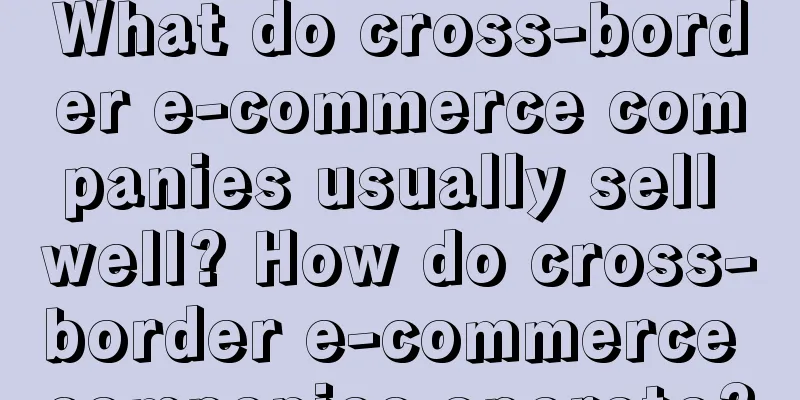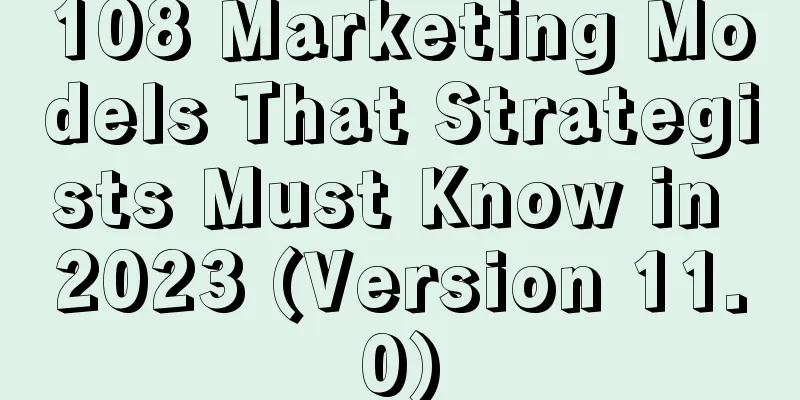Seven paths to brand planning

As the market environment changes, the importance of brand as a comprehensive discipline of philosophy and science in the business world has been recognized by more and more people. Nike is more expensive than Li Ning after it has a trademark; Apple, after it has a trademark, even its power bank can be priced many times higher. Not to mention luxury brands such as Chanel, Bulgari, and Prada. Since the brand is so important, we need to draw a strategic map for the brand to lead to eternity, so that the brand can sell quickly, for a long time, widely, and even forever. The new year has begun, and companies should either start a new brand upgrade or launch a brand improvement plan. When conducting brand planning, the following seven paths must not be ignored. 1. The first path: establishing the highest mission of the brand’s existenceTo create a timeless brand, we need to ask ourselves some questions that seem common sense but are extremely important: Why create a brand? Why should consumers pay a high price for our products? More precisely, a brand that aims to be timeless needs to demonstrate a sense of purpose wherever its market can reach, at least in its own field. Like all industry leaders, the Eternal brand must not only shoulder its own responsibilities, but also surpass the industry average and be the leader. What was our original intention when we created the brand? Now that the brand is developing well or has encountered some problems, what is our brand mission now? Has our brand set clear goals, such as goals for scale, sales or profits? Does our brand have the confidence to achieve its own goals and ideals? Do the brand's goals and vision match our target consumer groups? For example, Nike's brand goals are very consistent with the group that values sportsmanship. Although Nike is facing some problems in the Chinese market temporarily, as time goes by and the environment improves, the Nike brand will definitely be able to solve these temporary problems. Can the brand's goal provide a continuous driving force for the brand? Or is it just a stimulating and challenging action? As the founder of the brand, what do you think is the brand belief you created? What is your belief? What is the unique corporate culture belief formed by employees? Does the brand you created have a unique style and attitude? Are you determined to pursue the brand's mission? Is this mission highly authoritative in the industry and outside the industry? Can it inspire people to pursue their own mission? Apple's extraordinary mission can be a great call to employees and consumers. For brand founders, we need to think about whether we are willing to do our best to achieve the brand mission? Does your brand have unique characteristics? Or is it forward-looking and leading? 2. The second path: Make the brand a desire and a place of belonging for consumersTimeless brands need to create a sense of belonging for their customers, so that all customers get something they desire. Does the brand set a clear target group and use it to guide the brand's design and proposition? Does the brand's target group have a distinctive and motivating effect on the brand's core customers and "strategic target groups"? Apple's high-end, Muji's lifestyle, and Tesla's technological image have achieved this effect. Although the quality of Tesla's cars may not be as good as BYD's, BYD lacks incentives for consumers. Can the brand's mission be activated, or does it only have a conventional influence? Is the brand's goal limited? Or can it be used to unlimited imagination? Can the brand's goal find users who can help spread the brand's information? For example, the Victoria's Secret show in previous years, Chanel's fashion blog, and Xibei's attempt to create a kiss discount festival. Does the creation of the brand require more wealth than others, material wealth or spiritual wealth? Does the brand have the requirements to create brand norms and brand alliances? Does the brand create a sense of desire to reach the pinnacle with random elements? Does the brand create a complex relationship between the strategic target group? Is the brand's strategy consistent with the target group? Who or what is the brand against? Who is opposing the brand's behavior? Do you intentionally or unintentionally exclude non-target customers so that brand customers can feel privileged? Does the brand distinguish well between potential and actual buyers, or are there more people who intend to buy than those who can afford to buy? Does the brand make full use of limited editions, seasonality, and special allocations to stimulate sales? For example, American Express Black Card does this. Does the brand's target customer group wear the brand's logo on themselves or associate themselves with the brand on other levels? Or is the target consumer group trying every means to hide your logo? Brands such as LV and Chanel have achieved the goal that consumers are willing to wear accessories with their brand logos. 3. The third way: Find a way to interact well with consumersHow do brands interact with consumers? Is the interaction based on a confident attitude? Or a standard attitude? A timeless brand does not sell products, but attracts customers to consume. This is what Drucker said: marketing is not sales. Real marketing starts from product design. Marketing is the sum of a series of behaviors. The purpose of marketing is to make sales unnecessary. Apple never promotes its products or sells them. It only communicates and connects. When making connections, you won't appear too greedy or radical. Timeless brands will constantly surpass themselves while also considering consumer acceptance. Can the brand demonstrate strong confidence and appeal? Does the brand have a clear and distinct position? Sometimes, we really need to put aside political factors and look at brands that withdraw from certain countries. On certain things, brands do need a clear position. Does the brand maintain its aloof and uncompromising spirit? Can the brand accept all the economic impacts brought about by the brand strategy? When the brand shows its pride appropriately, does it gain the respect of consumers? For example, Hermès does not accept returns. Of course, it does not comply with China's three guarantees policy. If the brand borrows the celebrity effect, are these celebrities brand users and admirers, or paid performers? Many Chinese celebrities who endorse domestic brands are basically paid performers. Do you remember Wang Han endorsing Laotan Pickled Cabbage? A video leaked from the set: Wang Han himself didn't eat it at all, but dumped it into the trash can. In the case of low attention, does the brand do promotions and discounts? When the brand interacts with customers, does it get enough attention? Can people who don't buy the brand's products also feel or experience the brand culture? In addition to paying the media to promote the brand, can the brand itself carry out marketing activities or become a brand medium? For example, Red Bull has done very well. 4. The Fourth Way: Telling Consumers a Legendary StoryTelling consumers a story that is relevant to the brand and easy to spread is the most important marketing method for any brand. However, timeless brands need to turn their stories into brand myths. Have you explored the symbolic meaning of your brand name? Have you understood the ritual of brand names? What is the core of your brand? Does the brand story fit the image? Is the brand name provocative? Does the brand allow the target customer group to be part of the brand building? Does the brand realize the brand story through actions and make such efforts unremittingly? Does the brand elevate the brand story to the level of brand myth? Is the brand myth instructive? Does the development of the brand myth maintain the core of the myth while developing the idol temperament? For example, the elegant qualities of the Chanel brand. Can the brand's customer group or non-customer group describe the content of the brand myth in three sentences? As the founder of the brand, can you do this? 5. The fifth way: Make the product unique and distinctiveA brand can thrive only if its products are unique, have real value, and have a higher advantage than most brands. Top brands place their products in the most important position and give them the closest attention, so that they can be respected as they deserve. Does the brand product go beyond the core defined by the brand myth? Does the brand transform consumers’ “rational belief” in the brand into “trust in the brand because they are attracted by the brand story”, thereby emotionalizing brand marketing and ultimately achieving the goal of connecting with consumers? In the process of development, does the brand develop products and services for the purpose of gaining the respect of consumers? Do the brand products have soul and express the brand story? Are the rules of product use closely related to the brand? Are the brand assets properly allocated so that its own brand image reaches a position that can surpass the value of the brand trademark? Does the brand convert the language and code to the marketing model that suits its own products or other fields? Does the brand accept customized services? Do Lv brand products really have an idol image? Does the brand regularly update its idol image to adapt to the trend of the times? Do the brand products have a "holy grail" status in the brand myth or among similar products? 6. The Sixth Path: Living for DreamsThe brand's mission needs to be taken seriously, and the brand myth must be infused with real feelings. Eternal brands always reflect their beliefs, from brand leadership to brand organization to brand actions. We can look at the development path of religious brands. Details determine success or failure, and the difference of eternal brands lies in the details. Are the brand structure, brand creation process, brand culture and brand ethics fully reflected in the brand mission? Are the brand goals, brand organization and brand target audiences equal and coordinated? Can the working environment reflect the combination of brand mission and brand myth? In the process of adhering to brand beliefs, has the brand encountered difficult choices? If the brand itself is a brand under a large enterprise, will the brand benefit from it? For example, Shanghai Story was sold to a luxury brand. In the process of executing the brand project, will the entire brand be gradually destroyed? Will the brand apply all innovations and experiences to users to ensure that the core content of the brand will not be lost in the process of brand reproduction? In the execution of the brand project, can you feel the passion of the brand and the brand's attitude of pursuing perfection? Is the brand created by your company unique, or is it roughly the same as other brands? Does the brand really know what it is doing? If you don't recruit employees and attract customers, can the brand find its soul mate and loyal supporters? 7. The seventh path: Brand growth, never endingHow can you make your brand grow without overdeveloping? How can you get rid of the constraints of price? This requires brands to balance many aspects, slow down appropriately when development is too fast, improve immediately when development is slowing down, and rely closely on the brand and brand core. Do you consciously control brand investment and product production so that it can meet its own expansive growth? Have you avoided huge losses in the early stage and let the brand grow naturally without interference from other factors? I like marathon running. I think building a brand is like running. You need to start with a run before you start. We need to train our skills, improve our products, and improve our service quality, that is, to continuously manage the brand, and then increase the communication between the brand and customers, so that customers are more loyal to the brand design, and finally put the brand into the market. As a founder, have you done this? Before the vertical development, has the brand laid the foundation for horizontal development? Did the brand lay the foundation for horizontal growth before inflation? Did you create a unique sense of exclusivity for your brand's customer base? Did your customers establish a connection with your brand as it grew? Can your brand's purpose help it grow after years of development and expansion? As a founder, you need to answer these questions clearly with your team when developing the brand planning for 2023, and draw a map of the brand's path to eternity. Of course, a better way is to find a professional company to help you answer these questions and develop an action plan for the brand. Author: Liu Yichun Source: WeChat public account "Liu Yichun's Brand Business Innovation (ID: shangyeyiguohui)" |
<<: The copywriting of BOSS Zhipin has a Dong Yuhui flavor
>>: This New Year Goods Festival, they bring back the New Year atmosphere
Recommend
Can I use Apple ID to pay for eBay? What should I pay attention to?
More and more people like to shop online. When cho...
How do Lazada buyers apply for returns? How to deal with malicious returns?
Nowadays, cross-border e-commerce is a business pa...
How to distribute goods in cross-border e-commerce without source? What should be paid attention to?
As a flexible and low-cost business model, after s...
Does Shopee Taiwan require a VPN? Do I need an external network?
Cross-border e-commerce platforms are overseas web...
How much does it cost to build an independent website? How much does it cost?
An independent website is a free website, and the ...
Do digital credit cards have an annual fee? How much is it?
In the digital age, credit cards, as one of the pa...
How does Shopee's overseas warehouse in Mexico operate? How does Shopee's overseas warehouse ship goods?
Shopee platform has set up overseas warehouses in ...
The more niche the track, the more popular it is on Xiaohongshu
The Douyin fan-increasing list for March has been ...
What are Amazon's restricted products? How do Amazon merchants apply for restricted products?
When opening a store on Amazon, you must be carefu...
China Merchants Bank: The logic behind the adjustment of customer base management
This article deeply analyzes the strategic adjustm...
Sellers who were "driven crazy" by only refunding funds set up a mutual aid association to "save themselves"
Everyone is divided into provincial capitals, citi...
Will Shopify ban my account if I change my address? What actions will lead to a store ban?
Many merchants who want to build independent websi...
Where is Amazon Seller Central? How do I access it?
Amazon Seller Central is a management platform pro...
Brand personality theory
People with personality are often more likely to b...
What should I do if there is no product size picture for cross-border products? What are the picture requirements?
Cross-border e-commerce must be able to make the m...









